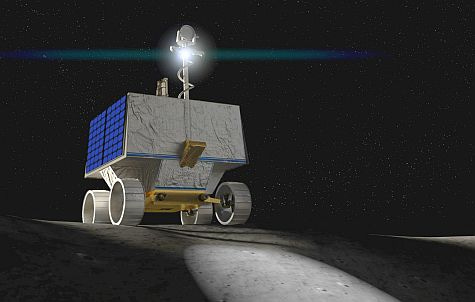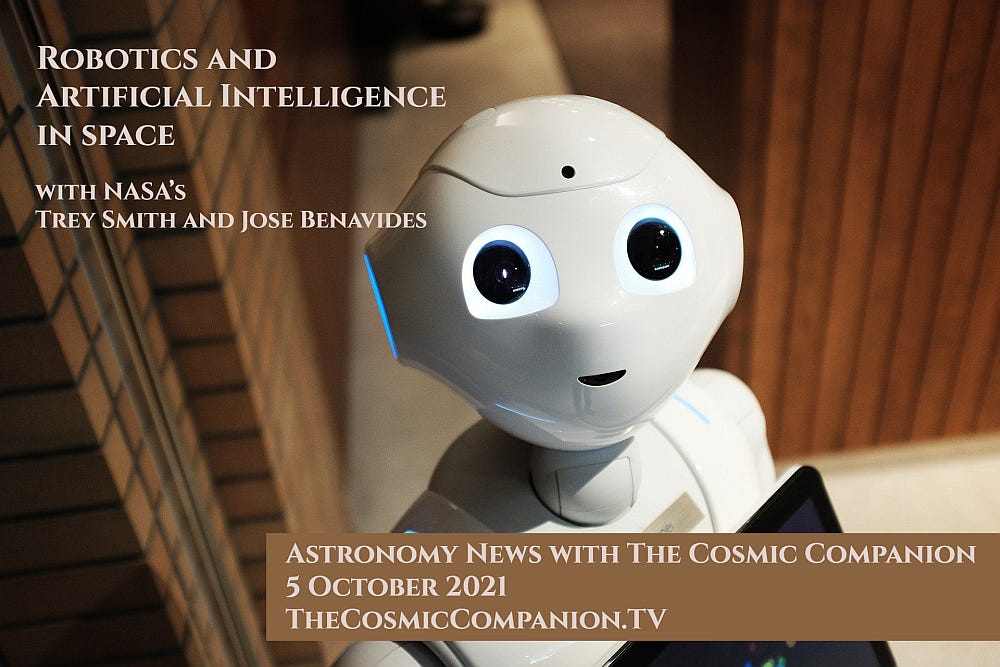Roman Chiporuhka, Space VIP, talks Private Spaceflight - The Cosmic Companion 28 Sept. 2021
We talk with Space VIP CEO Roman Chiporukha about the future of private spaceflight, plus a look at ancient Mars, an ancient galaxy, and a robot named VIPER
This week on Astronomy News with The Cosmic Companion, we talk with Roman Chiporuhka, CEO of Space VIP, about the future of private spaceflight, and what it could mean for the future of humanity.
We'll also take a look at the VIPER spacecraft which will soon scout locations for the return of humans to the Moon. Then, we'll head out to Mars, hearing about a new study showing water on Mars may have been doomed from the start. We're also going to take a look at light from a distant galaxy, seen as an Einstein ring in a new image from the Hubble Space Telescope.

Watch the video version of this episode:
Watch the video here, or listen to the podcast at: https://bit.ly/TCC-210921-pod
NASA plans to return humans to the Moon in the coming years with the Artemis program, which will touch down near the South Pole of our planetary companion. This area is largely unexplored, yet the region appears to be home to large deposits of water ice. Those supplies make this area the most-tempting property on the Moon on which to build a lunar base. NASA's VIPER spacecraft will touch down near the Nobile Crater there, which is thought to be rich in easily-accessible water for analysis and testing.
Mars is significantly smaller than Earth, and its low mass may be the ultimate cause for the arid conditions found on the Red Planet today, a new study finds. Early in the history of the Solar System, Mars was a water world – home to oceans, rivers, and lakes. Roughly 3.5 billion years ago, the Red Planet lost its magnetic field, exposing Mars to harsh radiation from the Sun, stripping our planetary neighbor of its atmosphere and surface water. Without the mass needed to continue driving its magnetic field, Mars never had a chance to hold onto its atmosphere and water, the study found.
In December 2020, astronomers released a new image from the Hubble Space Telescope, showing the most-detailed Einstein ring ever recorded. This phenomenon, the result of gravity bending light like a lens, magnifies the image of a galaxy, which sits roughly 9.4 billion light years from Earth. Examination of this warped image shows this family of stars at a time when star formation was 1000 times greater than it is today.
Upcoming Guests
5 October (s5/e13): Robots in space! An inside look at Astrobees, AI, and the future of robotics in space with NASA's Trey Smith and Jose Benavides!
12 October (s5/e14): Homer Hickam, once the young man at the center of the movie October Sky, talks about his new book, Don’t Blow Yourself Up!
19 October (s5/e15): ~just added~ Dr. Jenifer Millard, co-presenter, Awesome Astronomy podcast. Science Journalist, Fifth Star Labs Sky Guide
26 October (s5/e16): Halloween Special! ~just added~ The science of Halloween with Erika Engelhaupt, author of Gory Details.
New episodes drop (nearly) every Tuesday. Subscribe today and never miss an episode! (VIP members see every episode of the show one day early!)
Thanks for watching, listening, and sharing!
James



